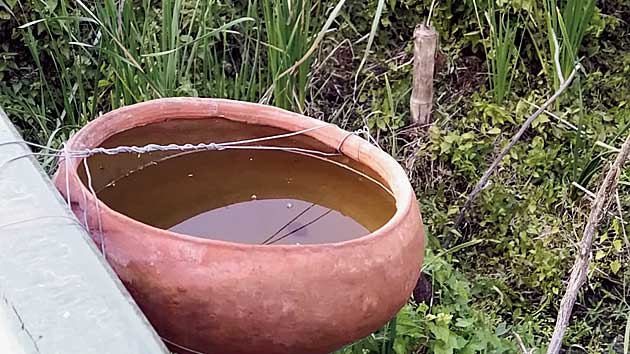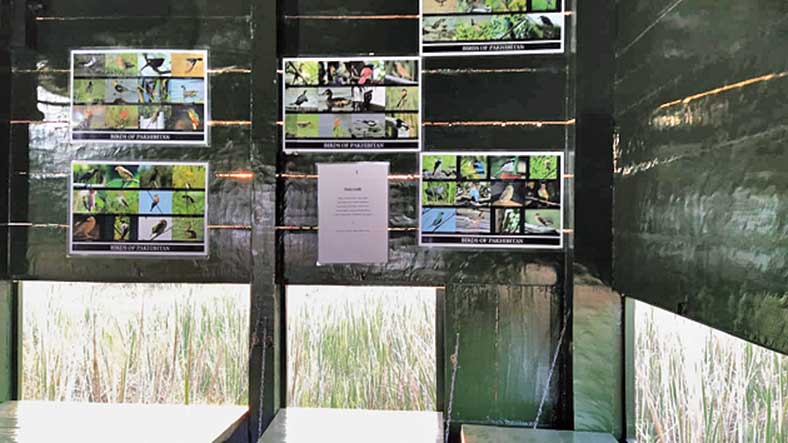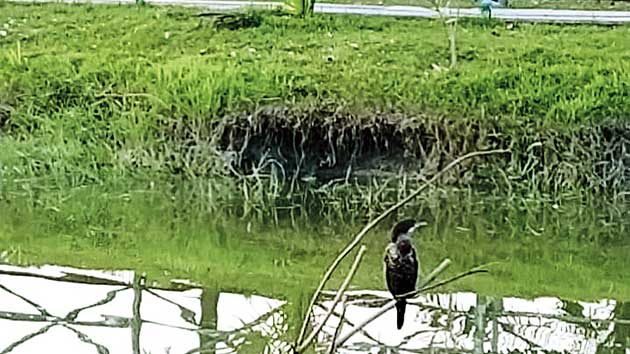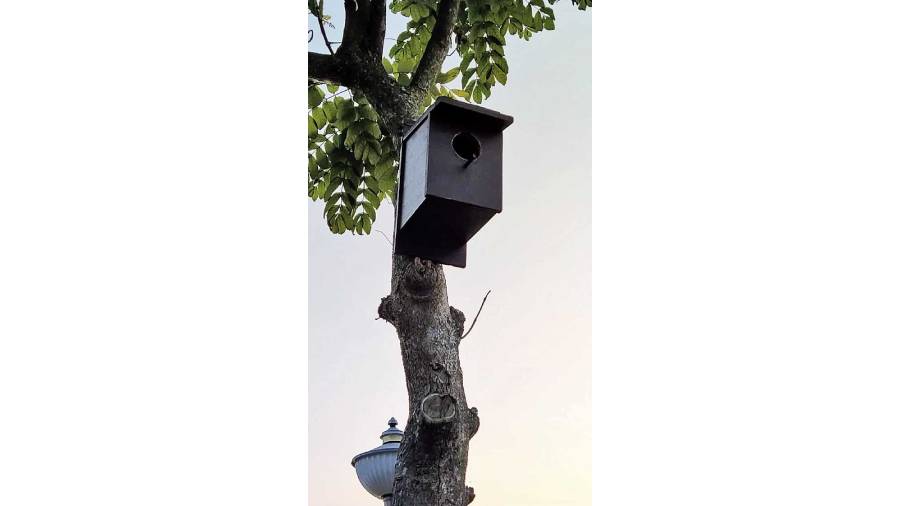A portion of Eco Park has been recently inaugurated as a bird sanctuary. Pakhibitan is a three-acre space opposite the golf course that is now allowing in birdwatchers. Guided tours are being planned for novices too.
Many birds have been spotted and recorded across the grasslands of New Town and Rajarhat in the past. However these grasslands, especially those around Action Area II, are not expected to be free from construction much longer. Keeping this in mind, Housing and Infrastructure Development Corporation (Hidco), has developed Pakhibitan into a protected habitat that birds that can always call their home.
The execution of the sanctuary has been carried out by Nature Mates, an NGO that works for conservation. The NGO also runs the butterfly dome at Eco Park. “We have spent more than a year planting grass reeds and fruit trees here, creating mud banks and preparing a man-made water body. We have also been documenting the birds coming over,” said Arjan Basu Roy, who heads the group.
Debasis Sen, chairman cum managing director of Hidco, said it was exciting to see that they had managed to attract birds to a place that was completely man-made.
“Unlike at a zoo, these birds are free to choose the place of their roosting. The fact that more than 130 species of birds have already been recorded at Pakhibitan shows that we have been successful in drawing them,” said Sen.

A plastic bird feeder hangs from the roof of the hut inside Pakhibitan in Eco Park. (Below) A watering point

Walk-through
The three-acre plot, near the golf course and deer park, has a wooden pathway cutting across an expanse of tall grass, with some trees along the perimeter. There is a water body and feeding bowls with grains placed at regular intervals. The chirping of birds is hard to miss.
“Check out that spotted dove! It’s feeding on the grains in the bowl,” pointed out Lina Chatterjee, a Nature Mates member, as The Telegraph Salt Lake took a tour. There was also a Eurasian Collar Dove and Red Vented Bulbull.

A display board lists and identifies the birds that have been spotted here The Telegraph
Although not as densely populated as Rabindra Sarobar, Santragachhi Jheel and other popular bird destinations in town, Pakhibitan has recorded over 130 species of birds over the past year. Birds like Acorbian Cuckoo, Yellow Wagtail, Black-tailed Godwit and Red-Wattled Lapwing are all visitors.
Migratory birds come too, such as the Common Snipe, a trans-Himalayan migrant that spends the cold winter months in marshes and grasslands of temperate areas. The Red Avadavat and Verditer Flycatcher have been recorded too.
It is easy to see why the birds like it here. While the other sections of Eco Park are bustling with people clicking selfies, enjoying picnic lunches and playing music from bluetooth speakers, this zone is tranquil.
The silence is interspersed only by calls of birds and the occasional quack from a family of ducks that calls the waterbody its home.
“Besides planting a grass variety, we have planted wild flowers with climbers and herbs that mimic the Rajarhat habitats. We have also planted fruit trees to attract fruit-eating birds. These trees will take time to grow but we are hopeful that more birds will start coming,” said Basu Roy.
To attract birds that prefer water and marshy areas, a mudflat has been created with bird boxes, floaters and wooden logs for them to rest in the water. They are also offering birds grains, seeds and worms on feeders and Basu Roy says the birds love it.
In fact, it is not only just birds making the space their home. More than 20 Indian flapshell turtles and softshell turtles that were rescued by the forest department have been released in the waterbody here.

A bird sits on a fence close to the waterbody The Telegraph
Bird walks planned
Basu Roy has submitted a proposal to Hidco to organise bird walks for birders in the morning twice a week, preferably on the weekends round the year.
If approved, this will be a two- hour activity covering Pakhibitan where birders will be allowed access to see and photograph the birds.
Apart from this, they plan to have bird walks of 45 minutes each from 2.45pm and 3.45pm with a group of no more than five persons who are new to the world of birding. “We are also planning a breakfast with birds where we will have story-telling sessions about the avians over breakfast,” said Basu Roy.
But no visitors will be allowed in without supervision.











